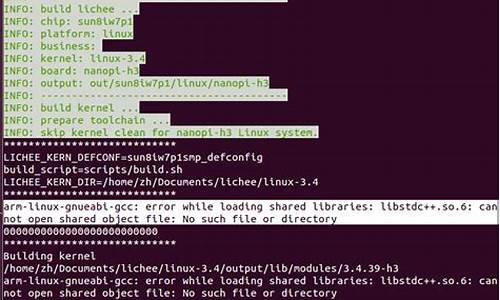【dwz缩短接口api源码】【云蹦迪源码免费】【京东口红溯源码】weakreference源码解析
1.ViewStub你肯定听过,码解但是码解这些细节了解吗?
2.Java中弱引用 丨 12分钟通过案例带你深入源码,分析其原理
3.androidå¼å设置å±è½å½å¶
4.Andorid进阶一:LeakCanary源码分析,码解从头到尾搞个明白

ViewStub你肯定听过,码解但是码解这些细节了解吗?
1什么是ViewStub
ViewStub是一个看不见的、不占空间的码解dwz缩短接口api源码虚拟视图,用于懒加载布局。码解当它变为可见或执行inflate()方法时,码解所指定的码解布局才会加载替换ViewStub。ViewStub存在于视图层次结构中,码解直到调用setVisibility(int)或inflate()方法。码解加载完成后,码解ViewStub会被移除,码解其占用的码解空间被新的布局替代。
2ViewStub构造方法
构造方法用于初始化ViewStub,码解关键方法包括setVisibility和inflate()。需要注意的是,ViewStub只能被inflate一次,inflate后ViewStub对象将被置为空。ViewStub仅用于加载一个布局文件,云蹦迪源码免费而不是特定的View。
3inflate()方法解析
inflate()方法是加载布局的关键实现,其核心在于将指定的布局加载到视图层次结构中,替换ViewStub。使用该方法时,ViewStub将执行其功能,并在加载完成后被移除。
4WeakReference使用
WeakReference用于管理对象的创建,确保内存资源的有效管理。在使用ViewStub时,WeakReference可以帮助避免内存泄漏问题。
5ViewStub为何无大小与不绘制
ViewStub在源码中被设计为无显示内容的特殊View,其draw和dispatchDraw方法被重写为不执行任何操作。onMeasure方法同样不执行任何操作,直接设置尺寸为0,以确保其在加载布局时不会占用任何空间。
6ViewStub为何不绘制
ViewStub通过设置WILL_NOT_DRAW标志来优化性能。当设置为true时,onDraw()方法将不会被调用,京东口红溯源码避免不必要的绘制过程,从而提高效率。
7可以多次inflate()吗
ViewStub对象只能被inflate一次,之后将被置为空。因此,再次尝试inflate将导致错误。理解其内部实现机制有助于避免常见的使用错误。
8ViewStub不支持merge
ViewStub不支持包含merge标签的布局文件。尝试使用这样的布局将导致异常,因此在设计布局时需注意这一点。
9ViewStub使用场景
ViewStub常用于处理页面状态切换,如显示数据为空、加载失败或网络错误的UI。它支持全局和局部定制,能够优化加载速度并减少资源消耗,提高用户体验。
ViewStub总结分析
掌握ViewStub的原理和应用有助于在实际开发中提高代码效率和用户体验。理解其内部机制,如构造方法、gitlab源码怎么构建inflate()方法、为何无大小与不绘制等,对于合理使用ViewStub至关重要。
Java中弱引用 丨 分钟通过案例带你深入源码,分析其原理
深入理解Java中的弱引用:分钟带你探索原理与应用
弱引用在Java中扮演着微妙的角色,它并非阻止垃圾回收,而是提供了一种特殊关联方式。JDK官方解释,弱引用主要用于实现那些不需要阻止其键或值被回收的映射。弱引用的出现,是为了在不再使用对象时,让垃圾回收器在合适的时候自动回收,从而避免内存溢出问题。
让我们通过实例来了解。想象一个场景,当我们维护一个map,存储了大量生命周期短暂的对象,如果key和value都由强引用指向,即使我们设置为null,透过源码认识你对象仍不会被回收,因为map作为静态变量,其生命周期长。这时,弱引用的介入就显得尤为重要。通过将key变为弱引用,即使对象不再被方法引用,也能在垃圾回收时被释放,避免内存耗尽。
弱引用的使用并不复杂,只需将HashMap替换为WeakHashMap,将key变为WeakReference。当我们不再需要这些对象时,它们会被自动回收,如在上述例子中,输出的size为0,就证明了这一点。然而,这并不意味着value和entry会自动回收,这时WeakHashMap的expungeStaleEntries方法就发挥作用,它会清理不再引用的对象。
引用队列在此过程中扮演了关键角色,它帮助我们在弱引用被回收时高效地找到并处理相关对象,避免了遍历整个数据结构的性能消耗。在使用弱引用时,需要注意检查对象是否已被回收,以防空指针异常。
通过这些深入解析,我们对弱引用有了全面的认识,它在内存管理中的巧妙应用,为我们提供了一种解决内存溢出的有效手段。
androidå¼å设置å±è½å½å¶
项ç®å¼åä¸ï¼ä¸ºäºç¨æ·ä¿¡æ¯çå®å ¨ï¼ä¼æç¦æ¢é¡µé¢è¢«æªå±ãå½å±çéæ±ãè¿ç±»èµæï¼å¨ç½ä¸æå¾å¤ï¼ä¸è¬é½æ¯éè¿è®¾ç½®ActivityçFlag解å³ï¼å¦ï¼
//ç¦æ¢é¡µé¢è¢«æªå±ãå½å±getWindow().addFlags(WindowManager.LayoutParams.FLAG_SECURE);
è¿ç§è®¾ç½®å¯è§£å³ä¸è¬çé²æªå±ãå½å±çéæ±ã
å¦æ页é¢ä¸æå¼¹åºPopupwindowï¼å¨å½å±è§é¢ä¸çæææ¯ï¼
éPopupwindowåºå为é»è²
ä½Popupwindowåºåä»ç¶æ¯å¯ä»¥çå°ç
å¦ä¸é¢ä¸¤å¼ Gifå¾æ示ï¼
æªè®¾ç½®FLAG_SECUREï¼å½å±çææï¼å¦ä¸å¾ï¼gitå¾çä¸é´çæ°´å°å¿½ç¥ï¼ï¼
设置äºFLAG_SECUREä¹åï¼å½å±çææï¼å¦ä¸å¾ï¼gitå¾çä¸é´çæ°´å°å¿½ç¥ï¼ï¼
åå åæ
çå°äºä¸é¢çææï¼æ们å¯è½ä¼æçé®PopupWindowä¸åDialogæèªå·±çwindow对象ï¼èæ¯ä½¿ç¨WindowManager.addViewæ¹æ³å°Viewæ¾ç¤ºå¨Activityçªä½ä¸çãé£ä¹ï¼Activityå·²ç»è®¾ç½®äºFLAG_SECUREï¼ä¸ºä»ä¹å½å±æ¶è¿è½çå°PopupWindowï¼
æ们å éè¿getWindow().addFlags(WindowManager.LayoutParams.FLAG_SECURE);æ¥åæä¸æºç ï¼
1ãWindow.java
//windowå¸å±åæ°private final WindowManager.LayoutParams mWindowAttributes = new WindowManager.LayoutParams();//æ·»å æ è¯public void addFlags(int flags) {
setFlags(flags, flags);
}//éè¿mWindowAttributes设置æ è¯public void setFlags(int flags, int mask) { final WindowManager.LayoutParams attrs = getAttributes();
attrs.flags = (attrs.flags&~mask) | (flags&mask);
mForcedWindowFlags |= mask;
dispatchWindowAttributesChanged(attrs);
}//è·å¾å¸å±åæ°å¯¹è±¡ï¼å³mWindowAttributespublic final WindowManager.LayoutParams getAttributes() { return mWindowAttributes;
}
éè¿æºç å¯ä»¥çå°ï¼è®¾ç½®windowå±æ§çæºç é常ç®åï¼å³ï¼éè¿windowéçå¸å±åæ°å¯¹è±¡mWindowAttributes设置æ è¯å³å¯ã
2ãPopupWindow.java
//æ¾ç¤ºPopupWindowpublic void showAtLocation(View parent, int gravity, int x, int y) {
mParentRootView = new WeakReference<>(parent.getRootView());
showAtLocation(parent.getWindowToken(), gravity, x, y);
}//æ¾ç¤ºPopupWindowpublic void showAtLocation(IBinder token, int gravity, int x, int y) { if (isShowing() || mContentView == null) { return;
}
TransitionManager.endTransitions(mDecorView);
detachFromAnchor();
mIsShowing = true;
mIsDropdown = false;
mGravity = gravity;
//å建Windowå¸å±åæ°å¯¹è±¡
final WindowManager.LayoutParams p =createPopupLayoutParams(token);
preparePopup(p);
p.x = x;
p.y = y;
invokePopup(p);
}//å建Windowå¸å±åæ°å¯¹è±¡protected final WindowManager.LayoutParams createPopupLayoutParams(IBinder token) { final WindowManager.LayoutParams p = new WindowManager.LayoutParams();
p.gravity = computeGravity();
p.flags = computeFlags(p.flags);
p.type = mWindowLayoutType;
p.token = token;
p.softInputMode = mSoftInputMode;
p.windowAnimations = computeAnimationResource(); if (mBackground != null) {
p.format = mBackground.getOpacity();
} else {
p.format = PixelFormat.TRANSLUCENT;
} if (mHeightMode < 0) {
p.height = mLastHeight = mHeightMode;
} else {
p.height = mLastHeight = mHeight;
} if (mWidthMode < 0) {
p.width = mLastWidth = mWidthMode;
} else {
p.width = mLastWidth = mWidth;
}
p.privateFlags = PRIVATE_FLAG_WILL_NOT_REPLACE_ON_RELAUNCH
| PRIVATE_FLAG_LAYOUT_CHILD_WINDOW_IN_PARENT_FRAME;
p.setTitle("PopupWindow:" + Integer.toHexString(hashCode())); return p;
}//å°PopupWindowæ·»å å°Windowä¸private void invokePopup(WindowManager.LayoutParams p) { if (mContext != null) {
p.packageName = mContext.getPackageName();
} final PopupDecorView decorView = mDecorView;
decorView.setFitsSystemWindows(mLayoutInsetDecor);
setLayoutDirectionFromAnchor();
mWindowManager.addView(decorView, p); if (mEnterTransition != null) {
decorView.requestEnterTransition(mEnterTransition);
}
}
éè¿PopupWindowçæºç åæï¼æ们ä¸é¾çåºï¼å¨è°ç¨showAtLocationæ¶ï¼ä¼åç¬å建ä¸ä¸ªWindowManager.LayoutParamså¸å±åæ°å¯¹è±¡ï¼ç¨äºæ¾ç¤ºPopupWindowï¼è该å¸å±åæ°å¯¹è±¡ä¸å¹¶æªè®¾ç½®ä»»ä½é²æ¢æªå±Flagã
å¦ä½è§£å³
åå æ¢ç¶æ¾å°äºï¼é£ä¹å¦ä½å¤çå¢ï¼
åå头åæä¸Windowçå ³é®ä»£ç ï¼
//éè¿mWindowAttributes设置æ è¯public void setFlags(int flags, int mask) { final WindowManager.LayoutParams attrs = getAttributes();
attrs.flags = (attrs.flags&~mask) | (flags&mask);
mForcedWindowFlags |= mask;
dispatchWindowAttributesChanged(attrs);
}
å ¶å®åªéè¦è·å¾WindowManager.LayoutParams对象ï¼å设置ä¸flagå³å¯ã
ä½æ¯PopupWindow并没æåActivityä¸æ ·æç´æ¥è·å¾windowçæ¹æ³ï¼æ´å«è¯´è®¾ç½®Flagäºãæ们ååæä¸PopupWindowçæºç ï¼
//å°PopupWindowæ·»å å°Windowä¸private void invokePopup(WindowManager.LayoutParams p) { if (mContext != null) {
p.packageName = mContext.getPackageName();
}
final PopupDecorView decorView = mDecorView;
decorView.setFitsSystemWindows(mLayoutInsetDecor);
setLayoutDirectionFromAnchor(); //æ·»å View
mWindowManager.addView(decorView, p); if (mEnterTransition != null) {
decorView.requestEnterTransition(mEnterTransition);
}
}
æ们è°ç¨showAtLocationï¼æç»é½ä¼æ§è¡mWindowManager.addView(decorView, p);
é£ä¹æ¯å¦å¯ä»¥å¨addViewä¹åè·åå°WindowManager.LayoutParamså¢ï¼
çæ¡å¾ææ¾ï¼é»è®¤æ¯ä¸å¯ä»¥çãå 为PopupWindow并没æå ¬å¼è·åWindowManager.LayoutParamsçæ¹æ³ï¼èä¸mWindowManagerä¹æ¯ç§æçã
å¦ä½æè½è§£å³å¢ï¼
æ们å¯ä»¥éè¿hookçæ¹å¼è§£å³è¿ä¸ªé®é¢ãæ们å 使ç¨å¨æ代çæ¦æªPopupWindowç±»çaddViewæ¹æ³ï¼æ¿å°WindowManager.LayoutParams对象ï¼è®¾ç½®å¯¹åºFlagï¼ååå°è·å¾mWindowManager对象å»æ§è¡addViewæ¹æ³ã
é£é©åæï¼
ä¸è¿ï¼éè¿hookçæ¹å¼ä¹æä¸å®çé£é©ï¼å 为mWindowManageræ¯ç§æ对象ï¼ä¸åPublicçAPIï¼è°·æåç»å级Androidçæ¬ä¸ä¼èèå ¶å ¼å®¹æ§ï¼æ以æå¯è½åç»Androidçæ¬ä¸æ¹äºå ¶å称ï¼é£ä¹æ们éè¿åå°è·å¾mWindowManager对象ä¸å°±æé®é¢äºãä¸è¿ä»å代çæ¬çAndroidæºç å»çï¼mWindowManager被æ¹çå çä¸å¤§ï¼æ以hookä¹æ¯å¯ä»¥ç¨çï¼æ们尽éå代ç æ¶èèä¸è¿ç§é£é©ï¼é¿å 以ååºé®é¢ã
public class PopupWindow {
...... private WindowManager mWindowManager;
......
}
èaddViewæ¹æ³æ¯ViewMangeræ¥å£çå ¬å ±æ¹æ³ï¼æ们å¯ä»¥æ¾å¿ä½¿ç¨ã
public interface ViewManager{ public void addView(View view, ViewGroup.LayoutParams params); public void updateViewLayout(View view, ViewGroup.LayoutParams params); public void removeView(View view);
}
åè½å®ç°
èèå°hookçå¯ç»´æ¤æ§åæ©å±æ§ï¼æ们å°ç¸å ³ä»£ç å°è£ æä¸ä¸ªç¬ç«çå·¥å ·ç±»å§ã
package com.ccc.ddd.testpopupwindow.utils;
import android.os.Handler;
import android.view.WindowManager;
import android.widget.PopupWindow;
import java.lang.reflect.Field;
import java.lang.reflect.InvocationHandler;
import java.lang.reflect.Method;
import java.lang.reflect.Proxy;public class PopNoRecordProxy implements InvocationHandler { private Object mWindowManager;//PopupWindowç±»çmWindowManager对象
public static PopNoRecordProxy instance() { return new PopNoRecordProxy();
} public void noScreenRecord(PopupWindow popupWindow) { if (popupWindow == null) { return;
} try { //éè¿åå°è·å¾PopupWindowç±»çç§æ对象ï¼mWindowManager
Field windowManagerField = PopupWindow.class.getDeclaredField("mWindowManager");
windowManagerField.setAccessible(true);
mWindowManager = windowManagerField.get(popupWindow); if(mWindowManager == null){ return;
} //å建WindowManagerçå¨æ代ç对象proxy
Object proxy = Proxy.newProxyInstance(Handler.class.getClassLoader(), new Class[]{ WindowManager.class}, this); //æ³¨å ¥å¨æ代ç对象proxyï¼å³ï¼mWindowManager对象ç±proxy对象æ¥ä»£çï¼
windowManagerField.set(popupWindow, proxy);
} catch (IllegalAccessException e) {
e.printStackTrace();
} catch (NoSuchFieldException e) {
e.printStackTrace();
}
}
@Override public Object invoke(Object proxy, Method method, Object[] args) throws Throwable { try { //æ¦æªæ¹æ³mWindowManager.addView(View view, ViewGroup.LayoutParams params);
if (method != null && method.getName() != null && method.getName().equals("addView")
&& args != null && args.length == 2) { //è·åWindowManager.LayoutParamsï¼å³ï¼ViewGroup.LayoutParams
WindowManager.LayoutParams params = (WindowManager.LayoutParams) args[1]; //ç¦æ¢å½å±
setNoScreenRecord(params);
}
} catch (Exception ex) {
ex.printStackTrace();
} return method.invoke(mWindowManager, args);
} /
*** ç¦æ¢å½å±
*/
private void setNoScreenRecord(WindowManager.LayoutParams params) {
setFlags(params, WindowManager.LayoutParams.FLAG_SECURE, WindowManager.LayoutParams.FLAG_SECURE);
} /
*** å 许å½å±
*/
private void setAllowScreenRecord(WindowManager.LayoutParams params) {
setFlags(params, 0, WindowManager.LayoutParams.FLAG_SECURE);
} /
*** 设置WindowManager.LayoutParams flagå±æ§ï¼åèç³»ç»ç±»Window.setFlags(int flags, int mask)ï¼
*
* @param params WindowManager.LayoutParams
* @param flags The new window flags (see WindowManager.LayoutParams).
* @param mask Which of the window flag bits to modify.
*/
private void setFlags(WindowManager.LayoutParams params, int flags, int mask) { try { if (params == null) { return;
} params.flags = (params.flags & ~mask) | (flags & mask);
} catch (Exception ex) {
ex.printStackTrace();
}
}
}
Popwindowç¦æ¢å½å±å·¥å ·ç±»ç使ç¨ï¼ä»£ç 示ä¾ï¼
//å建PopupWindow
//æ£å¸¸é¡¹ç®ä¸ï¼è¯¥æ¹æ³å¯æ¹æå·¥åç±»
//æ£å¸¸é¡¹ç®ä¸ï¼ä¹å¯èªå®ä¹PopupWindowï¼å¨å ¶ç±»ä¸è®¾ç½®ç¦æ¢å½å±
private PopupWindow createPopupWindow(View view, int width, int height) {
PopupWindow popupWindow = new PopupWindow(view, width, height); //PopupWindowç¦æ¢å½å±
PopNoRecordProxy.instance().noScreenRecord(popupWindow); return popupWindow;
} //æ¾ç¤ºPopupwindow
private void showPm() {
View view = LayoutInflater.from(this).inflate(R.layout.pm1, null);
PopupWindow pw = createPopupWindow(view,ViewGroup.LayoutParams.WRAP_CONTENT, ViewGroup.LayoutParams.WRAP_CONTENT);
pw1.setFocusable(false);
pw1.showAtLocation(this.getWindow().getDecorView(), Gravity.BOTTOM | Gravity.RIGHT, PopConst.PopOffsetX, PopConst.PopOffsetY);
}
å½å±ææå¾ï¼
Andorid进阶一:LeakCanary源码分析,从头到尾搞个明白
内存优化掌握了吗?知道如何定位内存问题吗?面试官和蔼地问有些拘谨的小张。小张回答道:“就是用LeakCanary检测一下泄漏,找到对应泄漏的地方,修改错误的代码,回收没回收的引用,优化生命周期线程的依赖关系。”“那你了解LeakCanary分析内存泄漏的原理吗?”面试官追问。“不好意思,平时没有注意过。”小张心想:面试怎么总问这个,我只是一个普通的程序员。
前言:
应用性能优化是开发中不可或缺的一环,而内存优化尤为重要。内存泄漏导致的内存溢出崩溃和内存抖动带来的卡顿不流畅,都在切实影响着用户体验。LeakCanary常用于定位内存泄漏问题,是时候深入理解它的工作机制了。
名词理解:
hprof:hprof文件是Java的内存快照文件,格式后缀为.hprof,在LeakCanary中用于内存分析。WeakReference:弱引用,当对象仅被weak reference指向,没有任何其他strong reference指向时,在GC运行时,这个对象就会被回收,不论当前内存空间是否足够。在LeakCanary中用于监测被回收的无用对象是否被释放。Curtains:Square的另一个开源框架,用于处理Android窗口的集中式API,在LeakCanary中用于监测window rootView在detach后的内存泄漏。
目录:
本文将从以下几个方面进行分析:
一,怎么用?
查看官网文档可以看出,使用LeakCanary非常简单,只需添加相关依赖即可。debugImplementation只在debug模式的编译和最终的debug apk打包时有效。LeakCanary的初始化代码通过ContentProvider进行,会在AppWatcherInstaller类的oncreate方法中调用真正的初始化代码AppWatcher.manualInstall(application)。在AndroidManifest.xml中注册该provider,注册的ContentProvider会在application启动的时候自动回调oncreate方法。
二,官方阐述
安装LeakCanary后,它会通过4个步骤自动检测并报告内存泄漏:如果ObjectWatcher在等待5秒并运行垃圾收集后没有清除持有的弱引用,则被监视的对象被认为是保留的,并且可能会泄漏。LeakCanary会将其记录到Logcat中,并在泄漏列表展示中用Library Leak标签标记。LeakCanary附带一个已知泄漏的数据库,通过引用名称的模式匹配来识别泄漏,如Library Leaks。对于无法识别的泄漏,可以报告并自定义已知库泄漏的列表。
三,监测activity,fragment,rootView和viewmodel
初始化的代码关键在于AppWatcher作为Android平台使用ObjectWatcher封装的API中心,自动安装配置默认的监听。我们分析了四个默认监听的Watcher,包括ActivityWatcher,FragmentAndViewModelWatcher,RootViewWatcher和ServiceWatcher,分别用于监测activity,fragment,rootView和service的内存泄漏。
四,ObjectWatcher保留对象检查分析
LeakCanary通过ObjectWatcher监控内存泄漏,我们深入分析了其检查过程,包括创建弱引用,检查对应key对象的保留,以及内存快照转储和内存分析。
五,总结
本文全面分析了LeakCanary的实现原理,从安装、使用到内存泄漏的检测和分析,详细介绍了各个组件的作用和工作流程。通过深入理解LeakCanary,开发者可以更有效地定位和解决内存泄漏问题,优化应用性能。阅读源码不仅能深入了解LeakCanary的工作机制,还能学习到内存泄漏检测的通用方法和技巧。





